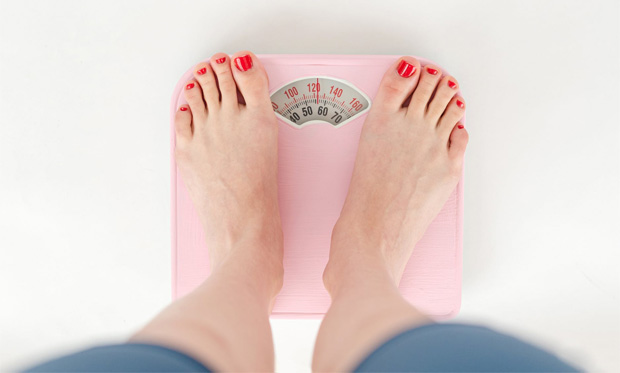What Are the Different Stages of Intermittent Fasting?

What Are the Different Stages of Intermittent Fasting?
Intermittent fasting (IF) is an emerging eating pattern involving periods without eating or drinking for specific periods.
This strategy is increasingly popular as an effective means of losing weight and improving health.
Intermittent fasting comes in various stages, each having different impacts on your body. Benefits may include cell regeneration and repair, increases to basal metabolic state and hormone regulation as well as more.
To learn about the different stages of intermittent fasting, continue reading.
What Is Intermittent Fasting?
Intermittent fasting is a type of diet or eating plan in which you have to fast for a specific interval of time. There are a variety of approaches to intermittent fasting that you can try.
16/8 is one of the more popular intermittent fasting protocols and involves fasting for 16 hours daily, followed by an 8-hour eating window. While this type of intermittent fasting may help short-term weight loss efforts, long-term results may require different approaches.
5:2 schedules offer a more flexible version of intermittent fasting that involves eating normally five days out of seven and not eating on two. On fasting days, one meal of 500 to 600 calories may suffice; when returning to normal eating on other days.
Once you begin intermittent fasting, your body may take several weeks to adapt. At first, you may experience headaches and hunger pangs; these usually diminish over time. If you have any health concerns or questions about IF, please consult with a healthcare provider prior to beginning.

The Different Stages of Intermittent Fasting
Intermittent fasting differs from other fasting methods in that it involves shifting back and forth between eating and fasting states. We will explore each stage of intermittent fasting as well as its advantages.
- Anabolic Stage (0-4 Hours)
The anabolic stage of fasting typically occurs between 0-4 hours after eating. Here, your body breaks down carbohydrates, proteins, and fats into glucose, amino acids, and fatty acids. These compounds are then utilized by either being converted directly into energy or stored away for later use.
- Catabolic Stage (4-12 Hours)
The catabolic stage of fasting typically follows 4-12 hours after its anabolic stage. Here, your insulin and blood glucose levels drop, prompting the release of glucagon, which in turn stimulates metabolism to break down and use stored glycogen (stored glucose) as fuel.
- Fat-Burning Stage (12-18 Hours)
After 12 hours of fasting, your body begins transitioning away from using glucose for fuel and toward burning fat as energy instead. At this stage, your body begins searching for new energy sources, and ghrelin levels decrease while insulin levels stabilize.
- Ketosis Stage (18-72 Hours)
After 18 or more hours of fasting, your glucose and insulin levels will begin to drop, leading to nutritional ketosis and an IGF-1 (an important hormone involved with growth and development) decrease. As your body begins using fats instead of glucose for energy, your liver begins to produce ketone bodies (molecules synthesized from fatty acids). Ketone bodies provide fuel for your brain and other vital organs when glucose is no longer available.
- Deep Ketosis Stage (72+ Hours)
As soon as your body transitions from burning carbohydrates as its main source of fuel to using fat instead, the glucose levels in your bloodstream will decline significantly. As you move deeper into ketosis, autophagy increases, and your body enters an aggressive cleaning mode, recycling old diseased and damaged cells while stimulating stem cell activation to create new immune cells. This may also reduce oxidative stress levels, which in turn help prevent premature aging and disease.

What Are the Different Types of Intermittent Fasting?
Here are the different types of intermittent fasting. Your choice of fasting method depends on your goals and lifestyle.
- Alternate-Day Fasting
Alternate-day fasting is one of the most popular forms of intermittent fasting. This practice entails restricting calorie consumption every other day, with feast days reserved for more indulgent foods and indulgence. Studies have demonstrated that alternate-day fasting can enhance fat-burning by switching your body into ketosis.
- Time-Restricted Fasting
Time-restricted fasting involves eating all your meals within a specific window of time each day. Fasting might mean cutting back so that all your food can be eaten within the eating windows each day. Time-restricted eating may help promote weight loss, boost heart health and reduce blood sugar levels.
- One-Meal-A-Day Fasting
One-meal-a-day fasting (OMAD) is one of the most prevalent forms of intermittent fasting. This form involves eating all your daily caloric needs in one sitting each day. Studies have demonstrated the many health and weight benefits of OMAD. It can reduce aging, boost metabolism, improve health, defend against disease, and make meal preparation simpler.

Does Intermittent Fasting Help with Weight Loss?
Some experts claim that intermittent fasting may aid weight loss if coupled with sensible eating during non-fasting times. However, others caution that this form of dieting might not work for everyone.
Intermittent fasting should form part of a healthy diet plan. Individuals adopting it should prioritize consuming nutritious foods while keeping caloric consumption within reasonable levels to promote weight loss.
However, it may not be appropriate for everyone. For instance, intermittent fasting may not be suitable for people who suffer from diabetes or an eating disorder and could alter thyroid hormone levels which regulate metabolism and energy balance.
Which Type of Intermittent Fasting Is Right For You?
There are different forms of intermittent fasting, each offering their own benefits. Selecting one for yourself depends on your lifestyle and personal goals.
It is recommended that you consult with a healthcare professional or a registered dietitian before starting any IF regimen. It will ensure that the diet is safe and effective for you. They can help you choose the best type of intermittent fasting based on your health status, medication usage, and other personal factors. After consulting with professionals, fasting apps may be helpful to follow your journey. Read more about the best choices here.
Conclusion
As you engage in intermittent fasting, your body undergoes multiple stages of the fed-fast cycle, which vary according to the duration of your fast. Every phase is different in terms of the primary energy source used by the body and its impact on metabolism. So, it is crucial to consult your healthcare provider before attempting intermittent fasting if you have any underlying health conditions or are taking any medications.
Guest Article.





